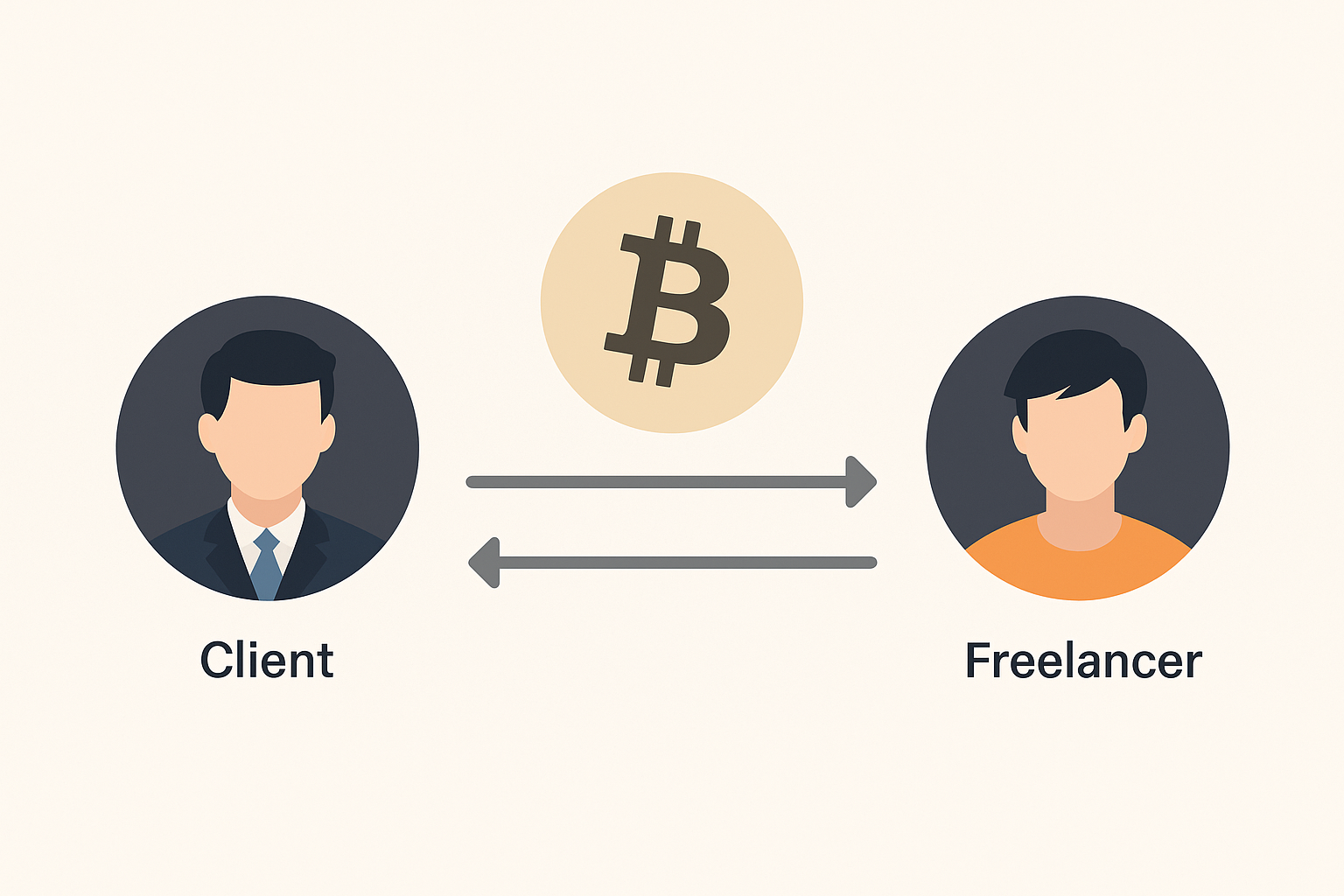Turn your skills into sats—no coding required.
🌍 Why Freelance in Crypto?
Freelancing is already a liberating way to work. You choose your hours, clients, and projects. But what if you could also choose your currency—and skip banks entirely?
Welcome to the world of crypto freelancing, where you can get paid in Bitcoin or stablecoins without relying on sluggish payment systems or high transfer fees. With blockchain tech, cross-border transactions become instant, secure, and censorship-resistant.
Whether you’re a writer, designer, developer, marketer, or virtual assistant, the Web3 world has a place for your skills—and a way to pay you directly in digital assets.
🧾 Step 1: Use Bitwage to Get Paid in Bitcoin (Even by Fiat Clients)
Bitwage is a service designed for freelancers and remote workers who want to get paid in crypto, even if their clients don’t use it themselves.
Here’s how it works:
- You generate an invoice in your native fiat currency (USD, EUR, GBP, etc.).
- Bitwage provides a unique bank account for each client.
- Your client pays the invoice like a normal wire transfer.
- Bitwage converts the funds into Bitcoin or stablecoins and deposits them into your wallet.
You don’t need to convince your client to install a wallet, understand blockchain, or deal with exchange rates. They pay fiat—you receive crypto. It’s that simple.
Other benefits:
- Global support in 200+ countries.
- Support for both personal and business accounts.
- Fast, transparent conversion and low fees.
🌐 Step 2: Find Crypto-Friendly Freelance Jobs
Now that you’ve got a way to receive Bitcoin, the next step is to land clients who’ll pay you in it.
Try These Freelance Portals:
- CryptoJobs.com – Curated jobs across DeFi, NFTs, and blockchain development.
- CryptoJobsList – A wide range of crypto-related positions including marketing, writing, design, and support.
- CryptocurrencyJobs.co – Community-driven listings for startups and decentralized projects.
- Gitcoin – Task-based bounties in open-source Web3 projects, often paying in ETH or project tokens.
- CryptoTask & Ethlance – Freelance marketplaces designed to connect Web3 workers with decentralized employers.
These platforms often list roles that specify crypto as the preferred (or required) form of payment. Some allow you to set your rates directly in BTC or stablecoins.
🧠 Step 3: How to Invoice in Bitcoin
There are two main ways to invoice a client when freelancing in Web3:
Option 1: Use Bitwage
- You send a standard invoice with your fiat rate.
- Bitwage collects the fiat payment.
- They convert it into your desired crypto (Bitcoin, USDC, etc.) and deposit to your wallet.
This is perfect when your client wants to pay in fiat, but you want to receive crypto without touching centralized exchanges.
Option 2: Invoice Directly in Bitcoin
If your client is already crypto-savvy, this is the more straightforward option:
- Create an invoice stating the agreed price in USD or local currency.
- Include your BTC wallet address.
- The client sends the crypto equivalent at the agreed time using current rates.
Best practice:
Use a new Bitcoin address for every invoice. It makes payment tracking easier and protects your privacy. You can generate fresh addresses with most non-custodial wallets.
You can also add a QR code for ease of use.
📊 Step 4: Track Your Income and Stay Tax Compliant
Freelancing in crypto doesn’t mean freelancing from the law. You still need to track your income and report it properly—especially in countries where crypto is taxable as income or capital gains.
Thankfully, there are tools made for this:
- Koinly – Sync your wallets and exchanges to generate income and tax reports.
- CoinLedger – Another beginner-friendly platform for freelancers, ideal for income tracking, invoicing, and yearly summaries.
These tools simplify tax season, especially when juggling multiple wallets, assets, and fluctuating values.
🤝 Step 5: Build Trust and Get Repeat Clients
In the Web3 space, reputation is everything. You can build yours by:
- Completing tasks on time and communicating clearly.
- Keeping client payments transparent with simple invoicing practices.
- Offering flexible options: some clients prefer stablecoins (like USDC or DAI) over Bitcoin due to price stability.
As your network grows, you can earn recurring gigs, long-term retainers, and referrals—all in crypto.
🔒 Security Tips When Working in Crypto
Getting paid in Bitcoin has benefits, but also responsibilities:
- Use a non-custodial wallet for long-term storage.
- Avoid reusing wallet addresses for privacy.
- Enable 2FA on your email and any payment platforms.
- Consider using a cold wallet (like Ledger or Trezor) if holding large balances.
- Be cautious of phishing emails and fake clients—double-check all offers.
🧮 Quick Pros & Cons Summary
| Pros | Cons |
|---|---|
| Global payments without intermediaries | Volatility risk if paid in BTC |
| No bank account needed | Tax reporting can be complex |
| Fast settlement (minutes, not days) | Some clients still hesitant about crypto |
| Higher earning potential in Web3 | Requires a basic understanding of wallets |
Final Thoughts: Freelancing on Your Terms
Freelancing in Web3 isn’t just about cool buzzwords—it’s a real, evolving way to work that gives you more financial freedom, borderless access to clients, and full control over how you earn.
Whether you’re a developer, designer, writer, community manager, or strategist, there’s a project out there looking for your skills—and ready to pay you in Bitcoin.
It’s not the future of freelancing. It’s the now.




